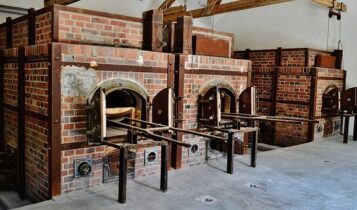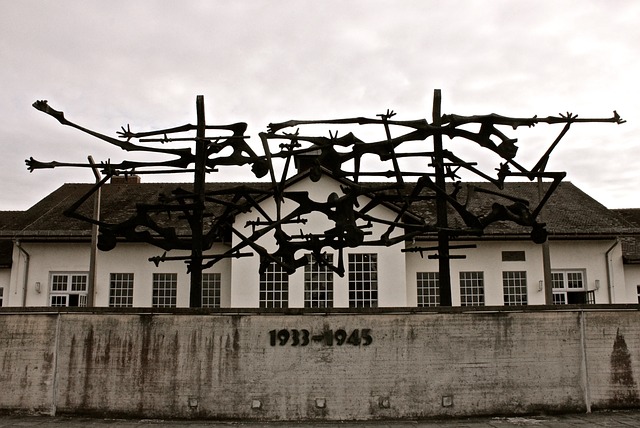Visiting the Dachau Concentration Camp in Munich 2023
An Emotional and Educational Journey: Visiting The Dachau Concentration Camp
This site is significant in remembering the victims of the Holocaust, and I believe it’s important to provide information for those planning to visit the memorial. We’ll cover the location and museum category, the concept of the memorial, admission fees, directions, related questions and frequently asked questions.
Visiting the Dachau Concentration Camp in Munich
From Munich to Dachau – Location and Museum Category
Going from Munich to Dachau is very easy. Dachau Concentration Camp is located just a short train ride from Munich. The memorial is in the former concentration camp itself, which is now a museum. The museum category is a historical site, which is fitting for a place that holds so much significance in history.

Concept of the Memorial
The concept of the memorial is to remember the victims of the Holocaust and educate visitors on what happened at Dachau Concentration Camp. The memorial’s goal is to promote a better understanding of the atrocities committed during the Holocaust and encourage tolerance and humanity for future generations.

Admission Fees and Directions
Admission to the memorial is free, but visitors are encouraged to make a donation to support the museum’s upkeep. To get there, take the S2 train from Munich’s main train station to Dachau Station. From there, you can take a bus or walk to the memorial.
Related Questions – Visiting the Dachau Concentration Camp in Munich
What is the history of the Dachau concentration camp?
Dachau Concentration Camp was commissioned by Heinrich Himmler in 1933, shortly after the Nazis came to power. Originally intended to hold political prisoners, the camp later expanded to include other groups such as Jews, homosexuals, and Romani people. During its time in operation, over 200,000 people were imprisoned at Dachau, and at least 41,500 died.

The camp was liberated by the U.S. Army in 1945, but not before thousands of prisoners were forced on a death march to other concentration camps. It’s important to remember the history of the Dachau Concentration Camp to fully appreciate the significance of the memorial.
If you want to access yearly information about Dachau Concentration Camp you can visit the page of “Stiftung Bayerische Gedenkstäten”.
What is the focus of the main exhibition?
The main exhibition is focused on the “Path of the Prisoners” theme, which takes visitors through the prisoners’ experience from the time of their arrival at the camp until their liberation or death. The exhibition includes reports, drawings, and biographies of the prisoners, as well as the historical site itself, which is an exhibit in its own right.
What other exhibitions can be visited?
In addition to the main exhibition, visitors can also visit the former camp prison, barracks exhibition, and former crematorium. These exhibits provide a deeper understanding of what life was like for prisoners at Dachau Concentration Camp.
What memorials are located on the grounds?
There are several memorials located on the grounds, including the Catholic Deathly Fright of Christ Chapel, the Protestant Church of Reconciliation, and the Jewish memorial. These memorials provide a space for reflection and remembrance for the victims of the Holocaust.
Arriving at the concentration camp
When arriving at the concentration camp, visitors will first see the “Arbeit Macht Frei” gate, which translates to “Work sets you free.” This gate is a chilling reminder of the propaganda used to lure prisoners into the camp.
Life in the concentration camp
The barracks exhibition provides a glimpse into what life was like for prisoners at Dachau Concentration Camp. Visitors can see the cramped living quarters, as well as the grueling work conditions prisoners were subjected to.
FAQ – Visiting the Dachau Concentration Camp in Munich
What is Dachau Concentration Camp used for?
The Dachau Concentration Camp was originally built by the Nazi regime in 1933 as the first concentration camp in Germany. It was used as a model for future concentration camps and served as a prototype for the entire Nazi concentration camp system. The camp was primarily used to imprison and persecute political opponents of the Nazi regime, including socialists, communists, trade unionists, and intellectuals.
However, as the war progressed, Dachau became a place of imprisonment for people of other groups, including Jews, homosexuals, Jehovah’s Witnesses, Roma, and disabled individuals. It’s estimated that over 200,000 prisoners were held at Dachau over its 12 years of operation, with an estimated 41,500 deaths recorded at the camp.

After the war, the Dachau Concentration Camp was used as a displaced persons camp and a refugee center before being turned into a memorial site in 1965 to honor the memory of those who suffered and died there. Today, the memorial serves as a place of remembrance and education, dedicated to preserving the memory of the victims of the Holocaust and promoting understanding and tolerance.
What were the horrors of Dachau Concentration Camp?
The horrors of Dachau Concentration Camp were numerous and unimaginable.
Prisoners at Dachau were subjected to brutal and inhumane treatment by the SS guards who oversaw the camp. They were forced to work long hours in dangerous and grueling conditions, often without adequate food, clothing, or medical care. Many prisoners suffered from malnutrition, disease, and exhaustion, and were subjected to beatings, torture, and execution by the guards.
The medical experiments conducted on prisoners at Dachau were particularly horrific. Prisoners were subjected to freezing temperatures, high altitude simulations, and other forms of torture and abuse in the name of scientific research.

The gas chambers at Dachau were not used for mass extermination as they were at other concentration camps, but prisoners were killed by other means, including shooting, hanging, and starvation. The crematoriums at Dachau were used to dispose of the bodies of prisoners who died from disease, starvation, or execution.
In addition to the physical horrors, prisoners at Dachau also suffered from psychological torment. They were stripped of their dignity and humanity, forced to wear identifying uniforms and subjected to degrading and humiliating treatment. Many prisoners lived in constant fear of punishment or execution, and witnessed the torture and death of their fellow inmates.
The horrors of Dachau Concentration Camp serve as a reminder of the darkest chapter in human history, and the importance of working towards a future where such atrocities never happen again.
Is it worth visiting Dachau?
Visiting Dachau Concentration Camp is a difficult but important experience, especially for those interested in history, human rights, and social justice. It serves as a powerful reminder of the atrocities committed during the Holocaust, and the need to work towards preventing such horrors from occurring again in the future.
While visiting Dachau can be emotionally and mentally challenging, it can also be a meaningful and educational experience. The memorial provides an opportunity for visitors to learn about the history of the camp, and the lives and experiences of those who were imprisoned there. The exhibitions and memorials on the grounds offer a powerful and sobering glimpse into the horrors of the Holocaust, and the ways in which it impacted individuals and communities.

Furthermore, visiting Dachau can be an act of remembrance and respect for the victims of the Holocaust. By bearing witness to the atrocities committed at the camp, visitors can pay their respects to those who suffered and died, and work towards honoring their memory.
It is important to note, however, that visiting Dachau is not appropriate for everyone. Due to the sensitive and emotionally charged nature of the site, it may not be suitable for young children or those who are easily disturbed by graphic or disturbing images and information. Additionally, visitors should be prepared for a somber and reflective experience, and should approach the site with respect and reverence.
What are the visiting hours for Dachau Concentration Camp?
The Dachau Concentration Camp Memorial is open daily from 9am to 5pm, with the exception of December 24th. However, it’s important to note that the last admission is at 4pm, so make sure you give yourself enough time to explore the site.
How long does a visit typically take?
It’s recommended that visitors allow for at least two to three hours to explore the memorial. However, the amount of time you spend at the site really depends on your own interests and pace.
Can children visit the memorial?
Yes, children are allowed to visit the memorial. However, parents should use their discretion as some of the exhibitions and materials may not be appropriate for young children.
Are guided tours available?
Yes, guided tours are available in several languages, including English, German, French, Spanish, and Italian. These tours typically last around two hours and are a great way to gain a deeper understanding of the history and significance of the site. Audio guides are also available for those who prefer to explore on their own.

Is there a dress code for visitors?
There is no specific dress code for visitors, but it’s recommended that you dress appropriately for the weather and wear comfortable shoes as there is a lot of walking involved.
Conclusion
In conclusion, visiting the Dachau Concentration Camp Memorial in Munich is a powerful and emotional experience that offers a sobering reminder of the atrocities committed during the Holocaust. It’s a place to pay tribute to the victims and honor their memory, as well as to learn about the history of the camp and the stories of those who suffered and died there.
The museum and exhibitions at the site offer a wealth of information and insight, from the history of the camp’s construction and operation to the daily lives of the prisoners and the horrors they endured. The various exhibitions, memorials, and monuments scattered throughout the site offer a poignant reminder of the scale and scope of the tragedy, as well as a testament to the resilience and bravery of those who survived.
If you’re planning a visit to the Dachau Concentration Camp Memorial, take the time to fully explore the site and absorb its history and significance. And remember to approach the experience with sensitivity and respect, honoring the memory of the victims and recognizing the importance of never forgetting the lessons of the past.
If you want to visit somewhere else in Germany, I would highly recommend Wartburg Castle. For crucial information about this medieval castle, you can easily refer to my article. The castle is truly impressive and worth a visit!
Wartburg Castle (2023 Ultimate Guide): UNESCO World Heritage



Comments are closed.